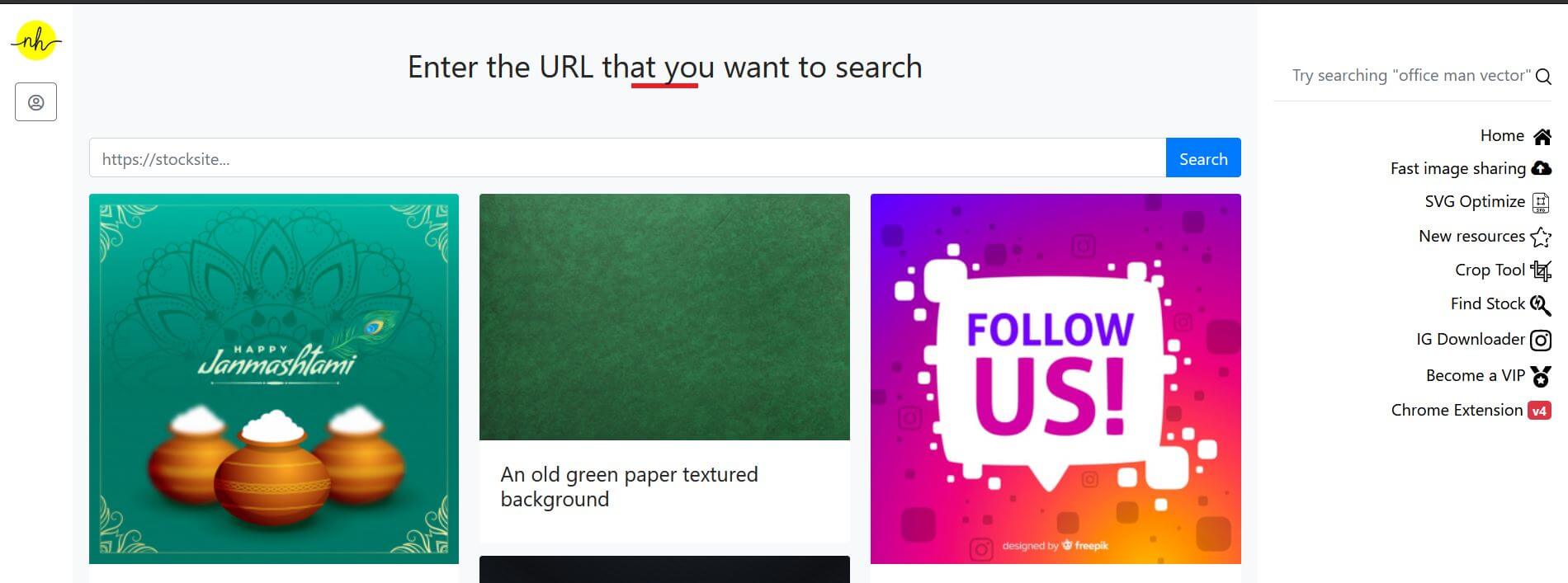If you’ve ever browsed Shutterstock for stunning images, you probably noticed those pesky watermarks plastered across the previews. They’re there to protect the photographers’ work and ensure you purchase the proper license. But what if you want to view images clearly or use them without paying upfront? While downloading images without watermarks without proper authorization isn’t legal, there are legitimate ways to access high-quality Shutterstock images for free or at a lower cost. In this guide, we’ll explore how you can navigate
Understanding Shutterstock Licensing and Watermarks

Shutterstock operates on a licensing model that grants users the right to use images under specific terms. When you browse Shutterstock, you’ll see watermarked previews of images. These watermarks serve as a security measure—they prevent unauthorized use and encourage users to purchase a license before downloading the high-resolution version.
Here’s what you need to know about Shutterstock’s licensing:
- Standard License: Suitable for most uses like websites, social media, or presentations. It allows a certain number of copies or views, but there are limits on print runs and merchandise.
- Enhanced License: Ideal for products for resale, large print runs, or more commercial uses. It offers broader rights and higher usage limits.
When you select an image, Shutterstock provides a preview with a visible watermark. This watermark helps you preview the image, but it’s not for final use. To legally use the image without the watermark, you need to purchase a license. Once purchased, you can download the high-resolution, watermark-free version.
It’s important to understand that trying to remove watermarks without authorization is illegal and against Shutterstock’s terms of service. Such actions can lead to legal issues and penalties. Instead, consider legitimate options like:
- Using Shutterstock’s free trials or promotional offers.
- Looking for free images on Shutterstock’s free collection, which is legally free to use with proper attribution.
- Exploring other free stock photo sites if your budget is tight.
Understanding these licensing basics helps you respect creators’ rights and ensures you’re using images legally and ethically. Remember, good visuals are worth investing in, whether through direct purchase, subscriptions, or free legal resources.
Legal Ways to Access Shutterstock Images Without Watermarks
When you’re working on a project—whether it’s for your blog, a presentation, or social media—having high-quality images can make all the difference. Shutterstock is a fantastic resource for a vast library of professional images, but those watermarks can be a bit of a hurdle, especially if you’re trying to preview images or stay within a budget. The key here is to access Shutterstock images legally and without watermarks, which means understanding the options available to you.
First and foremost, the most straightforward way is to purchase a license. Shutterstock offers various plans—subscriptions or on-demand image packs—that give you legal access to download high-resolution images without watermarks. While this isn’t free, it ensures you’re complying with copyright laws and supporting the creators. If you’re planning to use Shutterstock images regularly, a subscription can be cost-effective.
Another legal method is to use Shutterstock’s free trial. They often offer a free trial period (like 7 days or a certain number of free downloads). During this trial, you can download images without watermarks, provided you follow their terms. Just remember to cancel if you don’t want to be billed, and use the images within the trial period as per their licensing agreement.
Some images on Shutterstock are available under free licenses or promotional offers, especially during special events or campaigns. Keep an eye on their website or newsletters for such deals. Always verify that the images you download under these offers are properly licensed for your intended use.
Lastly, if you’re affiliated with an organization such as a university, company, or non-profit, check if they have a corporate or institutional license. Many organizations have subscriptions that allow their members or employees to access and download images legally without watermarks. It’s worth asking your admin or IT department about this.
In summary, the legal ways to access Shutterstock images without watermarks include:
- Purchasing the appropriate license or subscription
- Utilizing free trials offered by Shutterstock
- Taking advantage of special promotions or offers
- Using images through institutional or organizational licenses
Always remember: using images without proper licensing can lead to copyright issues, so it’s best to stick with these legitimate paths. Now that you know how to access images legally, let’s explore some fantastic free resources where you can find high-quality images without watermarks that are perfect for your projects.
Free Resources and Alternatives for High-Quality Images
If you’re looking for beautiful, high-quality images without watermarks and want to do it for free, there are plenty of reputable resources out there. These sites offer images that are either in the public domain or available under Creative Commons licenses, which means you can use them legally—just be sure to check the specific licensing requirements for each image.
Here are some of the top free resources for high-quality images:
1. Unsplash
Unsplash is a favorite among bloggers, designers, and content creators. It offers a vast library of stunning photos contributed by photographers worldwide. The best part? All images are free to use for commercial and personal projects, with no attribution required (though giving credit is always appreciated). The quality is top-notch, making it a fantastic alternative to paid stock images.
2. Pexels
Pexels provides a wide selection of free stock photos and videos. Their library is curated to ensure high quality and relevance. Like Unsplash, images are free to use without attribution, even for commercial purposes. They also offer a handy search feature, making it easy to find exactly what you need.
3. Pixabay
Pixabay hosts not only photos but also illustrations, vectors, and videos—all free for use. Their licensing policy is very flexible, allowing for commercial use without attribution in most cases. The variety of media types makes Pixabay a versatile resource for any project.
4. Gratisography
For something a bit more quirky and artistic, Gratisography offers a unique collection of high-resolution images shot by photographer Ryan McGuire. The images are free to use for personal and commercial projects, making it a great place to find creative visuals that stand out.
5. Public Domain Archives
Websites like Public Domain Pictures and Wikimedia Commons host images that are in the public domain or licensed for free use. Always double-check the license details before using an image, but these sites are gold mines for free, legal images.
Tips for Using Free Images:
- Always check licensing details: Even on free sites, some images may have restrictions.
- Give credit when possible: While not always required, attributing photographers supports their work and is good etiquette.
- Use relevant keywords: To find the perfect image, search with specific terms related to your project.
Using these resources, you can find high-quality, professional images for almost any purpose—all without paying a dime or risking copyright infringement. Whether you’re building a website, creating social media content, or designing marketing materials, these sites are invaluable allies in your creative toolkit.
Remember, while free resources are fantastic, always respect licensing conditions and give credit when required. Now, with a good grasp of legal options and free alternatives, you’re well-equipped to enhance your projects with stunning images—watermark-free and legally sound!
Tips for Finding Free Stock Images Legally and Safely
Looking for high-quality images without the watermark hassle? It’s totally doable, but it’s important to do it the right way—legally and safely. Here are some tips to help you navigate the world of free stock images without running into copyright issues or malware risks.
Understand Licensing and Usage Rights
Before you even start searching, get familiar with the licensing terms. Some images are free for personal use but require attribution if used commercially. Others might be completely free with no strings attached. Always read the license details carefully—this helps you avoid accidental copyright infringement.
Use Trusted Free Stock Image Platforms
- Pixabay – Offers a vast library of free images, videos, and illustrations. Most are under Creative Commons CC0, so you can use them freely.
- Unsplash – Known for high-resolution photos from talented photographers. No attribution needed but appreciated.
- Pexels – Provides free stock photos and videos with a simple license that allows for commercial and personal use.
- Flickr Commons – Contains images from archives and museums; check each image’s license before use.
Verify Image Sources and Avoid Malware
Stick to well-known, reputable sites. Be cautious of sites that seem sketchy or ask for unnecessary personal info or downloads. Always scan downloaded files with antivirus software before opening, just to be safe. Avoid sites that require you to sign up for suspicious reasons or force you to download unnecessary software.
Look for Creative Commons Licenses
Many images are shared under Creative Commons licenses, which specify how you can use them. Check if attribution is required, or if there are restrictions on modifications or commercial use. Websites like Creative Commons itself or Flickr’s licensing filters can help you find images that fit your needs.
Consider Creating Your Own Images
If you’re concerned about licensing, why not create your own images? Smartphone cameras are pretty powerful nowadays, and even simple snapshots can add a personal touch to your project. Plus, you have full control over usage rights.
Summary
Finding free stock images that are both legal and safe isn’t rocket science, but it does require a little diligence. Stick to trusted sources, understand licensing, verify image origins, and always prioritize safety. This way, you can confidently enhance your projects without worrying about legal pitfalls or security issues.
Conclusion: Using Shutterstock Images Responsibly and Legally
Shutterstock is a fantastic resource for high-quality images that can really elevate your content. However, it’s crucial to respect copyright laws and licensing agreements to avoid any legal headaches. If you’re looking to use Shutterstock images without watermarks for free, the best approach is to explore their free trial options, promotional offers, or to utilize images offered under their free image programs, if available.
Remember, attempting to download or use watermark-free images from Shutterstock outside of authorized methods—like unauthorized downloads or third-party sites—can lead to legal trouble and undermine the rights of photographers and creators. Always opt for legitimate avenues:
- Free Shutterstock images during promotional periods or on special offers.
- Subscription or licensing plans that fit your budget and needs.
- Creative Commons or public domain images from other trusted sources for completely free use.
Using images responsibly not only keeps you on the right side of the law but also supports the talented creators behind those images. Giving proper attribution when required and respecting licensing terms helps sustain the creative community. So, whether you’re a blogger, marketer, or student, always prioritize legal and ethical use of images. This way, you can enjoy the visual appeal they bring to your work without any worries.
In summary, be informed, choose reputable sources, and respect licensing. With those principles in mind, you’ll make the most of Shutterstock images and other stock resources—legally, ethically, and safely.

